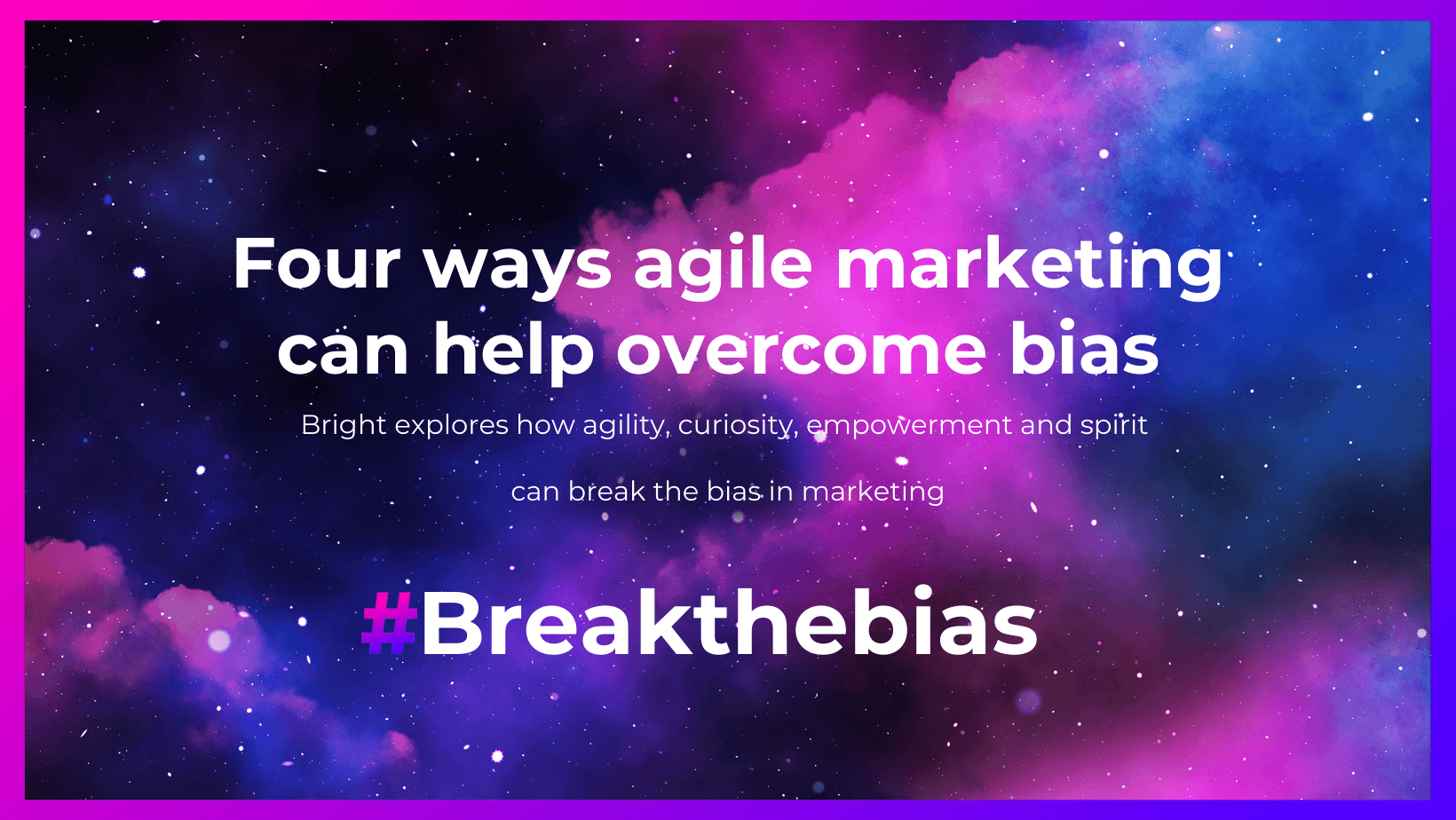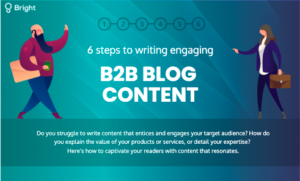Bright explores how agility, curiosity, empowerment and spirit can #Breakthebias
Beyond hashtags, inspirational videos and moving quotes, celebrating International Women’s Day should serve as a reminder of the ongoing effort and change that is still needed to bring true equality and equity to women in society. As a female led business Bright place diversity at the heart of our business. Zoe Merchant, Bright, Managing Director comments “We, as marketers, whose profession it is to create awareness, drive change and make an impact, have the power to tackle biases and discrimination that permeate our much evolved yet still opinionated society.”
Unconscious bias and systemic prejudices are innate traits of the human being which affects opinions, decision-making and actions. But we believe that by challenging the status quo and testing preconceptions we can disrupt mindsets and create positive change in the workplace, our society and in culture, day after day.
“None of us will see gender parity in our lifetimes, and nor likely will many of our children. That’s the sobering finding of the Global Gender Gap Report 2020, which reveals that gender parity will not be attained for 99.5 years,” Global Gender Gap Report 2020.
As pioneers of agile marketing, we apply the same methods we use for our strategies to our approach to diversity and equality within the work we do. We’re focused on proving how an agile approach to all areas of business, combined with a culture of empowerment and a diverse workforce fuels operational capability as a business and helps us remove the limitations of bias in marketing both for Bright and for our clients.
Our business values of agility, curiosity, empowerment, spirit, encompass our commitment to breaking the bias.
Break the bias with Agility
As a collective of agile marketing practitioners, the discipline of research, test and validate; learning and improving goes beyond our approach to marketing strategy. We know that diverse talent and influences contributes to a richer pool of experience where positive friction allows us to challenge the norm to embed new ways of working and test new methods to achieve results.
At Bright, we pride ourselves on embracing flexibility to attract and, most importantly, keep a diverse and talented team. Zoe Merchant comments, “At Bright, we respect, challenge and nurture each other to ensure our marketing and campaign strategies are creative, innovative, and rooted in validated concepts.”
Break the bias with Curiosity
As part of our agile approach at Bright, we’re to always examine the bigger picture and understand its origin and trajectory with a methodical approach. The environment we find ourselves in shouldn’t mould us into accepting facts at face value. Scrutiny and curiosity should challenge and fuel our perspectives, we should continue to ask ‘why’ to understand the details that will allow for improvements. Interrogating the data will help to set us free from legacy and unconscious bias. Marketers need to move away from vanity metrics and set robust KPI through measuring what matters. Only then can we drive change by making more educated and insightful decisions.
Break the bias with Empowerment
Remaining data and insight driven is how marketers have comprehensive knowledge of the state of the market and the audience mindset before planning any strategy. We believe that acquiring an agile, innovative, and creative mindset can help us connect with a more diverse audience and offer more far-reaching solutions. It’s also important to ensure unbiased segmentation as well as considering any unconscious or conscious bias in market & brand positioning. At Bright, we believe that empowering our team to interrogate the status-quo and ask difficult questions helps us to discover new opportunities, tackle market or brand stagnation and achieve faster growth.
“Gender-diverse companies are 21% more likely to experience above-average profitability and boost productivity.”
– McKinsey
Break the bias with Spirit
We’re continually aiming to expand our team’s demographic diversity – diversity of experience and opinion is valuable and helps overcome stale assumptions and challenge conventional thinking. Working as a team towards common goals, we strive to maximise outcomes through innovative solutions, never letting preconceptions and ideologies hold us back. Zoe Merchant comments, “Liberating ourselves from bias helps Bright craft agile marketing strategies and campaigns that better connect with target audiences and deliver a positive impact.”
“Diverse teams are more innovative—stronger at anticipating shifts in consumer needs and consumption patterns that make new products and services possible, potentially generating a competitive edge”
– McKinsey
The Brighter Way
As a female-led business, we celebrate diversity not only within Bright, but also by partnering with likeminded organisations who advocate for minority groups to have equal opportunities and celebrate the success of women and minorities across the business and leadership landscape. Bright is an active member of WEConnect, a global network that connects women-owned businesses to corporate buyers around the world who are committed to diversity and inclusion. Being a member of WEConnect allows us to tap into the talent of creative and entrepreneurial women and access business opportunities from organisations who are aligned with our values. At Bright, we celebrate diversity across all intersections, not limited to gender. Zoe Merchant has been selected for two years running as a member of the 40 over Forty List, celebrating the talent and experience of over 40’s in the advertising, marketing and media industry.
All marketers benefit from creating an inclusive environment around agility, empowerment, curiosity, and spirit resulting in creating better, more effective marketing. We enjoy challenging the status quo, testing to validate new, diverse approaches and measuring performance through audience response. Through iterating to continually improve we achieve viable and impactful agile marketing, endorse our talented team, and break the bias.











